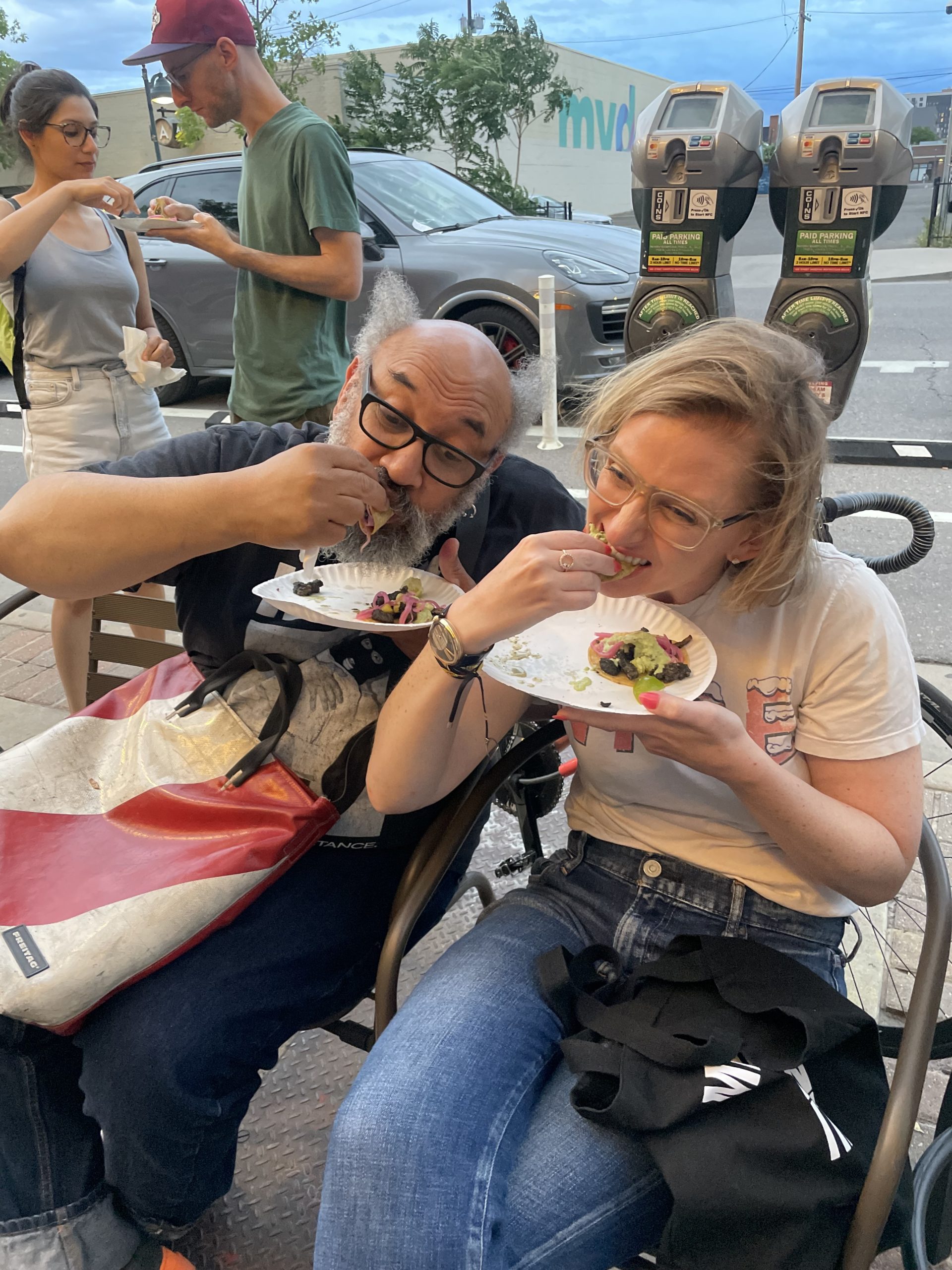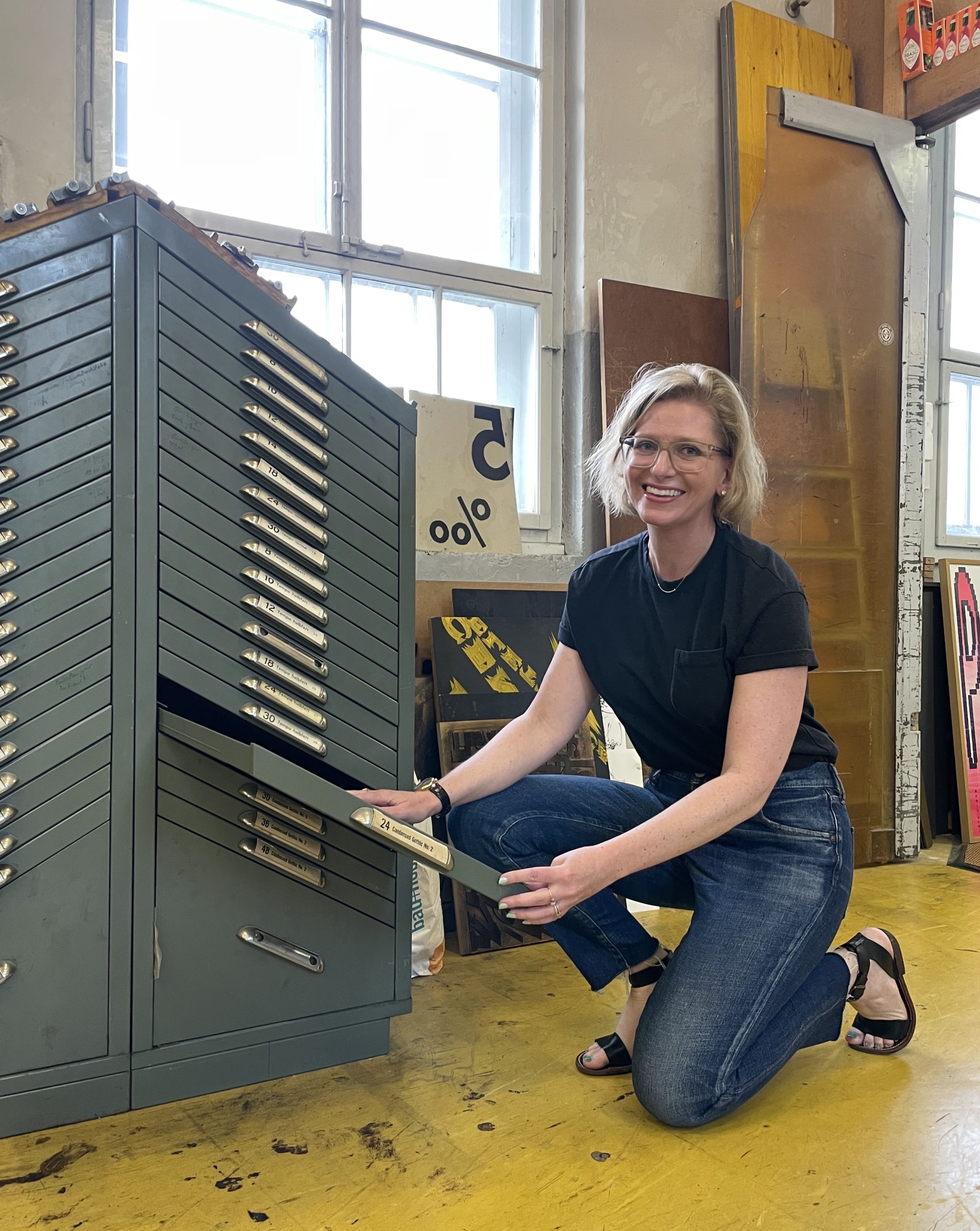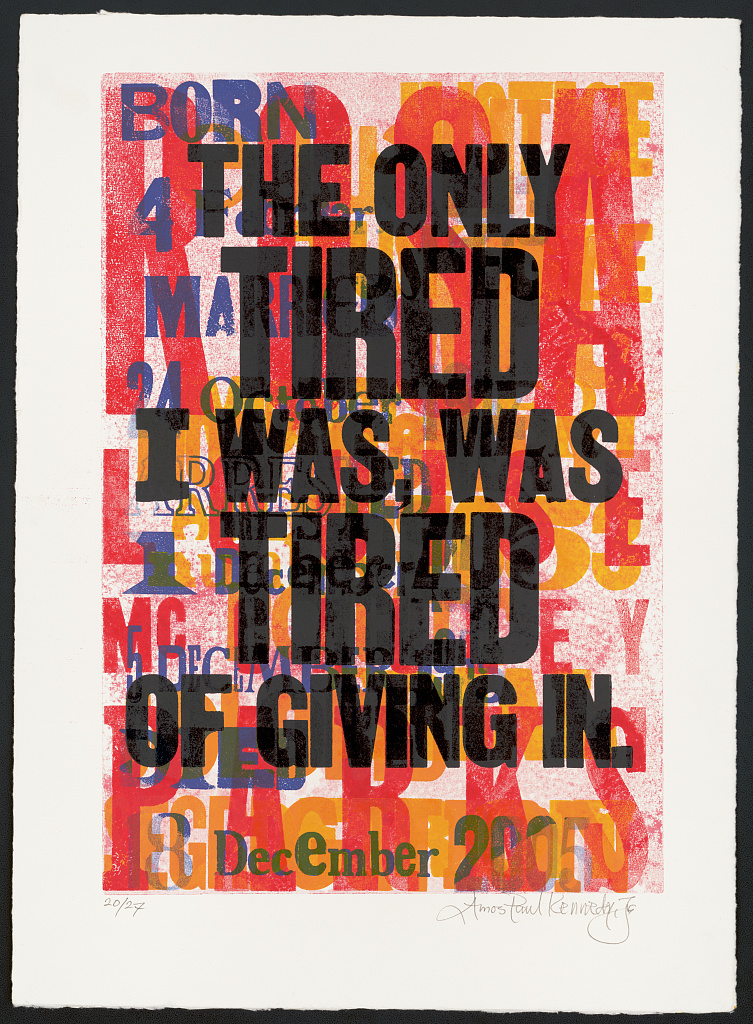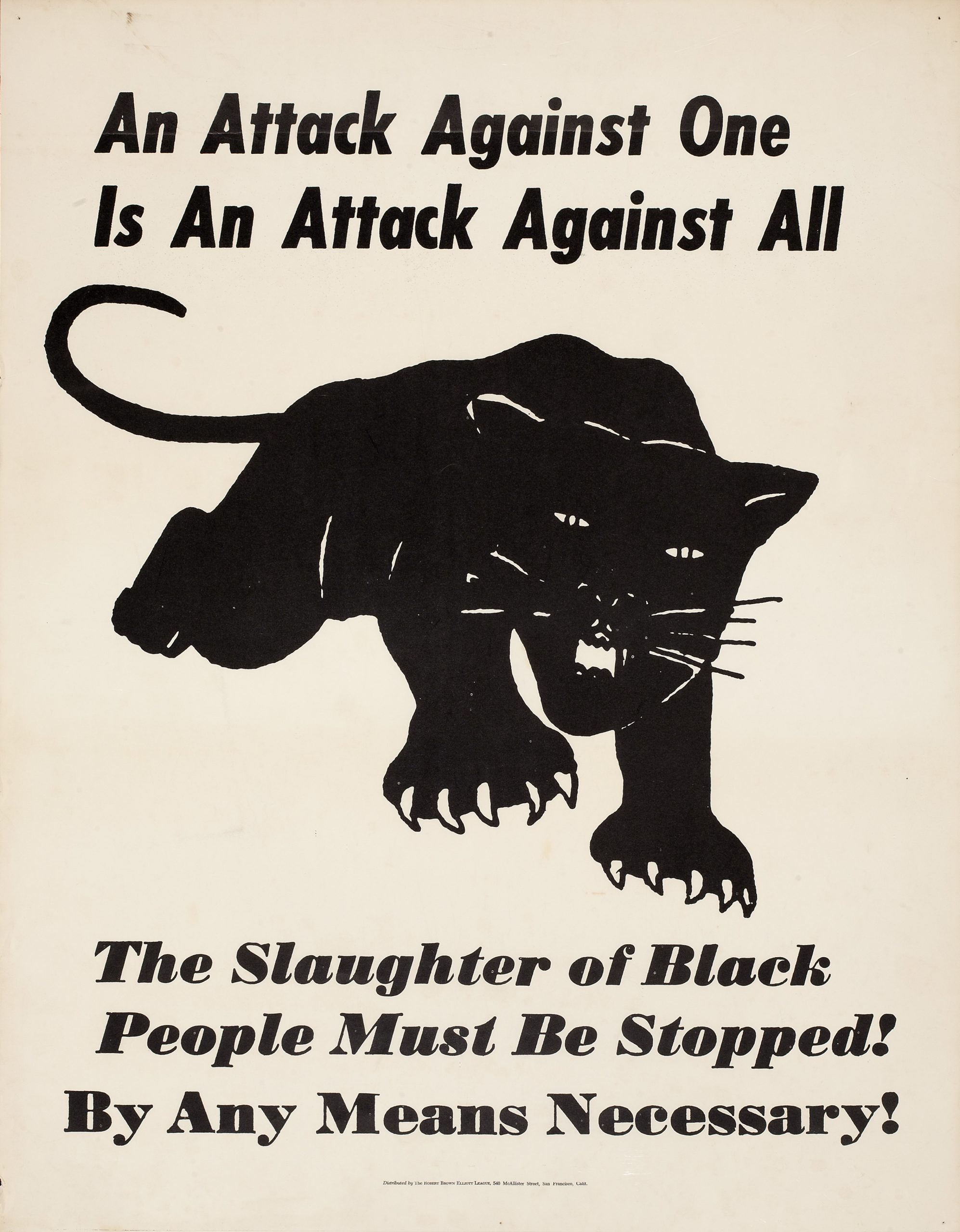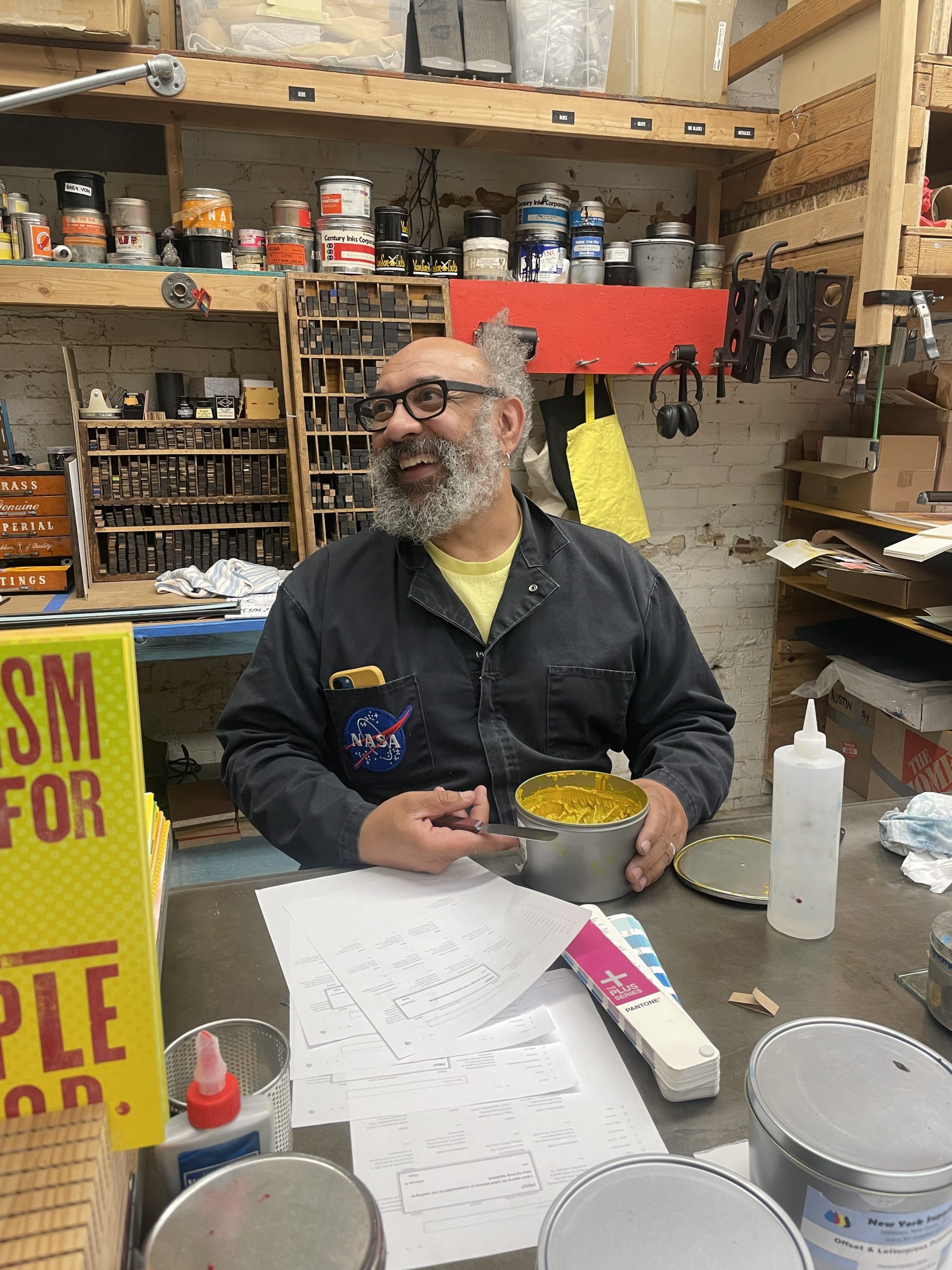
A Week with Rick Griffith
.Earlier this month, I spent a week with Rick Griffith—designer, printer, philosopher, educator, activist, and all-around excellent human. I came seeking posters and some printing experience, and left with a deeper understanding of how Rick works to design a better, more equitable world.
Looking at his posters, many of which are wildly different from each other, I asked him what he felt his style was. He responded by saying that claiming a style is a limitation. Instead, he has an approach to design, an approach that is all about growth and evolution. As such, he is pretty impossible to pigeon-hole. Each poster is tailored to its purpose, gathering elements from a variety of genres and eras to create the best solution for expressing the brief.
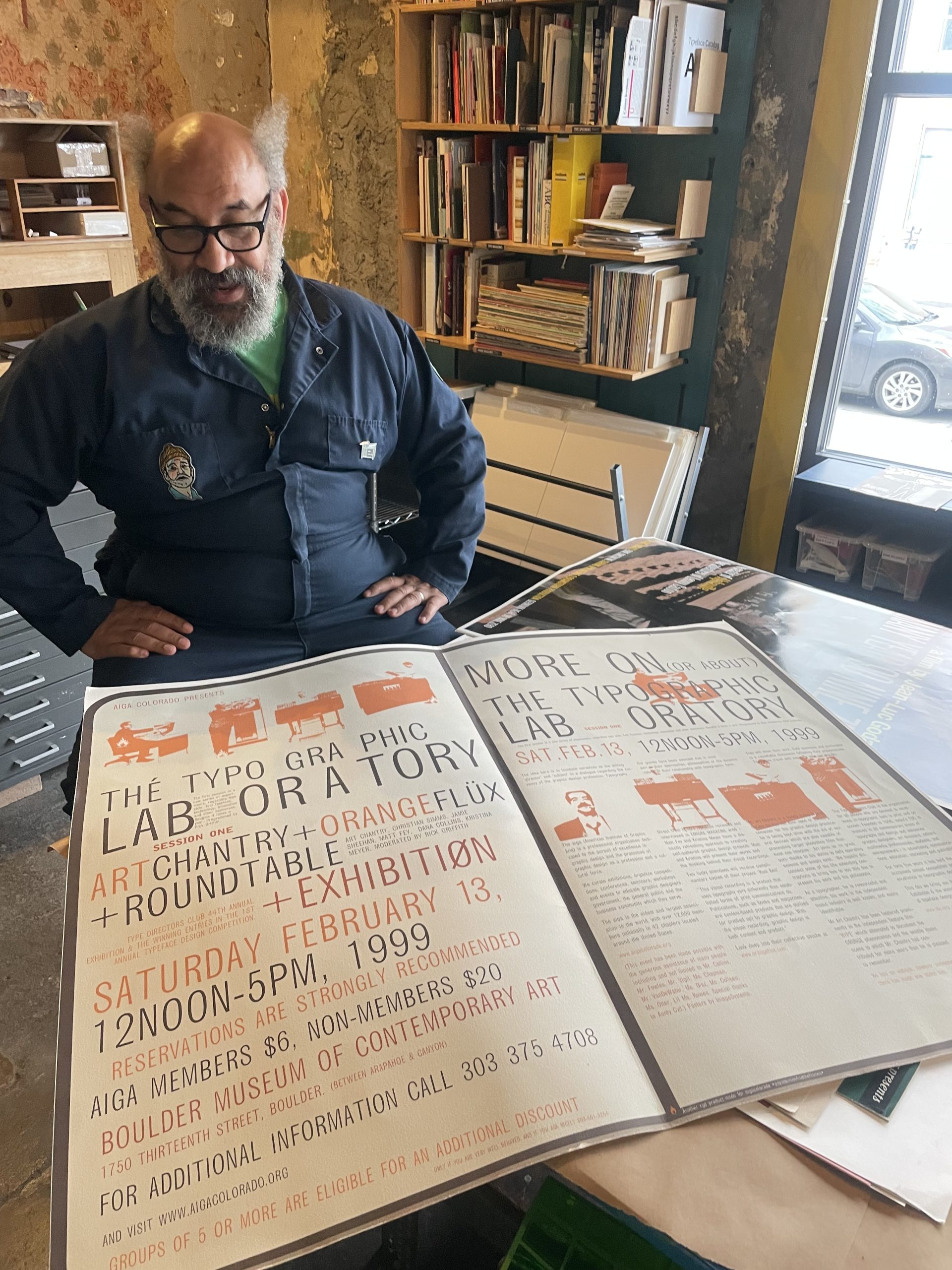
A self-taught graphic designer, he has, as he puts it, been in all the right places at all the right times to allow the universe to give him the opportunities to excel, connecting him with some of the greatest art movements in history and people in the field to collaborate with and learn from. While there is no limit to where he derives inspiration, a short list might include Tibor Kalman, Sister Corita, P. Scott and Laurie Haycock Makela, Chales and Ray Eames, and Wolfgang Weingart. His is a star-spangled career, spanning continents, countries, and cities and bringing with it a cornucopia of visual flavors from all these former homes and ports of call.
Ever optimistic of where life will take him, he believes he is always mid-career—meaning he has at least 30 years to go before he’s done. Unlike many other printers that have a distinct specialty, Rick has tried his hand at most of the major means of putting a replicable image on paper. He started screenprinting in 1993, adding letterpress to his repertoire four years later. In 1999, he founded his studio with a single 8 x 10 Platen press, and began incorporating offset printing into his practice that year.
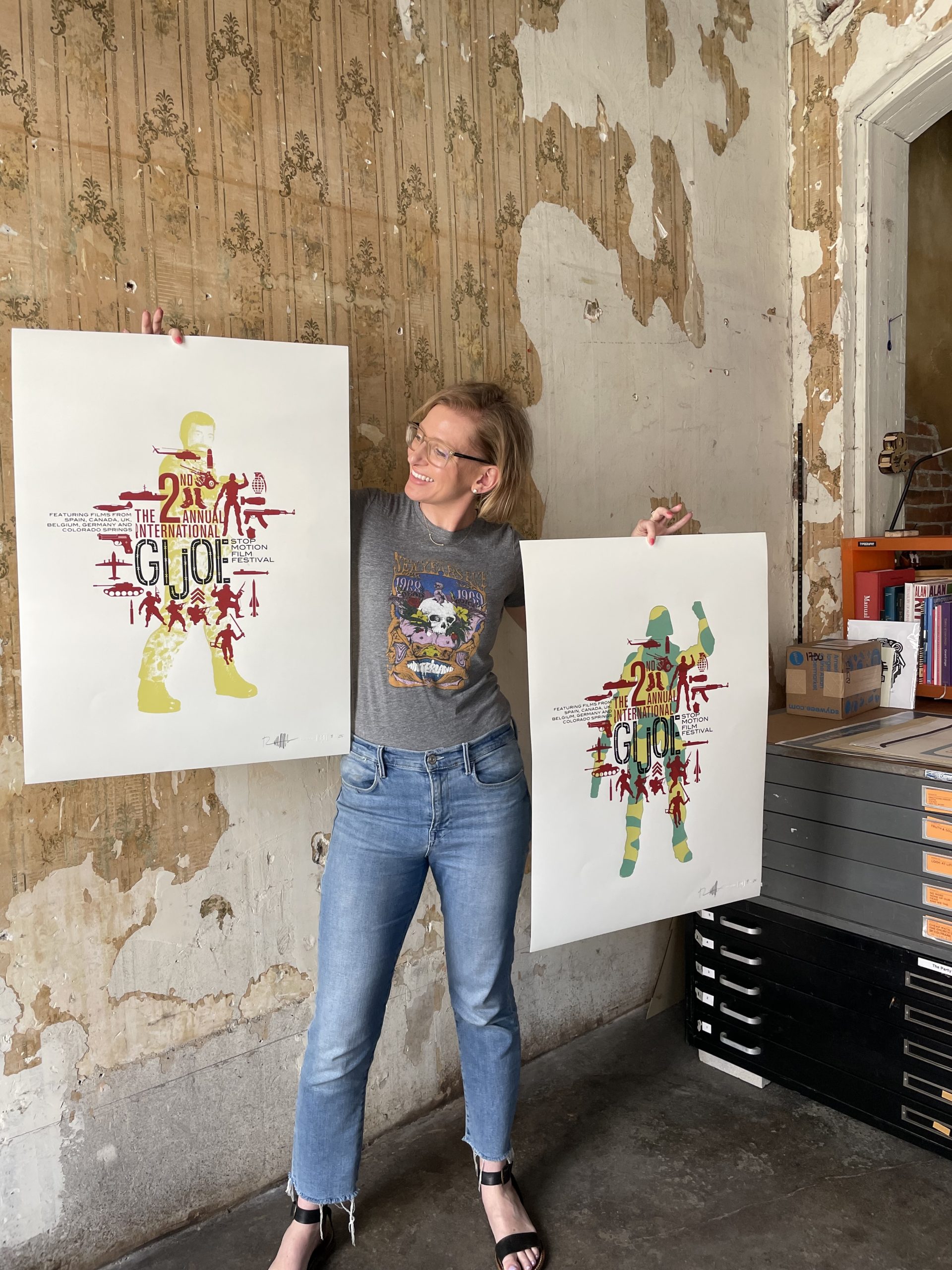
On my first day with him, we spent little time actually printing. Instead, we sifted through his archive, learned the lay of the land within his massive studio, and chatted in his library about design history. And what a library! It is an intellectual paradise filled with all the expected bells and whistles, like an entire rum of Emigre and the best in current design manuals, as well as the more obscure but deeply insightful Visible Language and Dot Dot Dot. It is a pick-and-mix of inspiration and food for the design soul. It’s a library that teaches you not only how to view design but how to see.
If this doesn’t sound like your typical print shop, you are correct. Inspired by the late Muriel Cooper who brought the “means of production” into the studio space at MIT’s Visible Language Lab, MATTER is a research center and community space, a hub for experimentation and a playground for likeminded seekers of cool shit that has been in its current location since 2008.
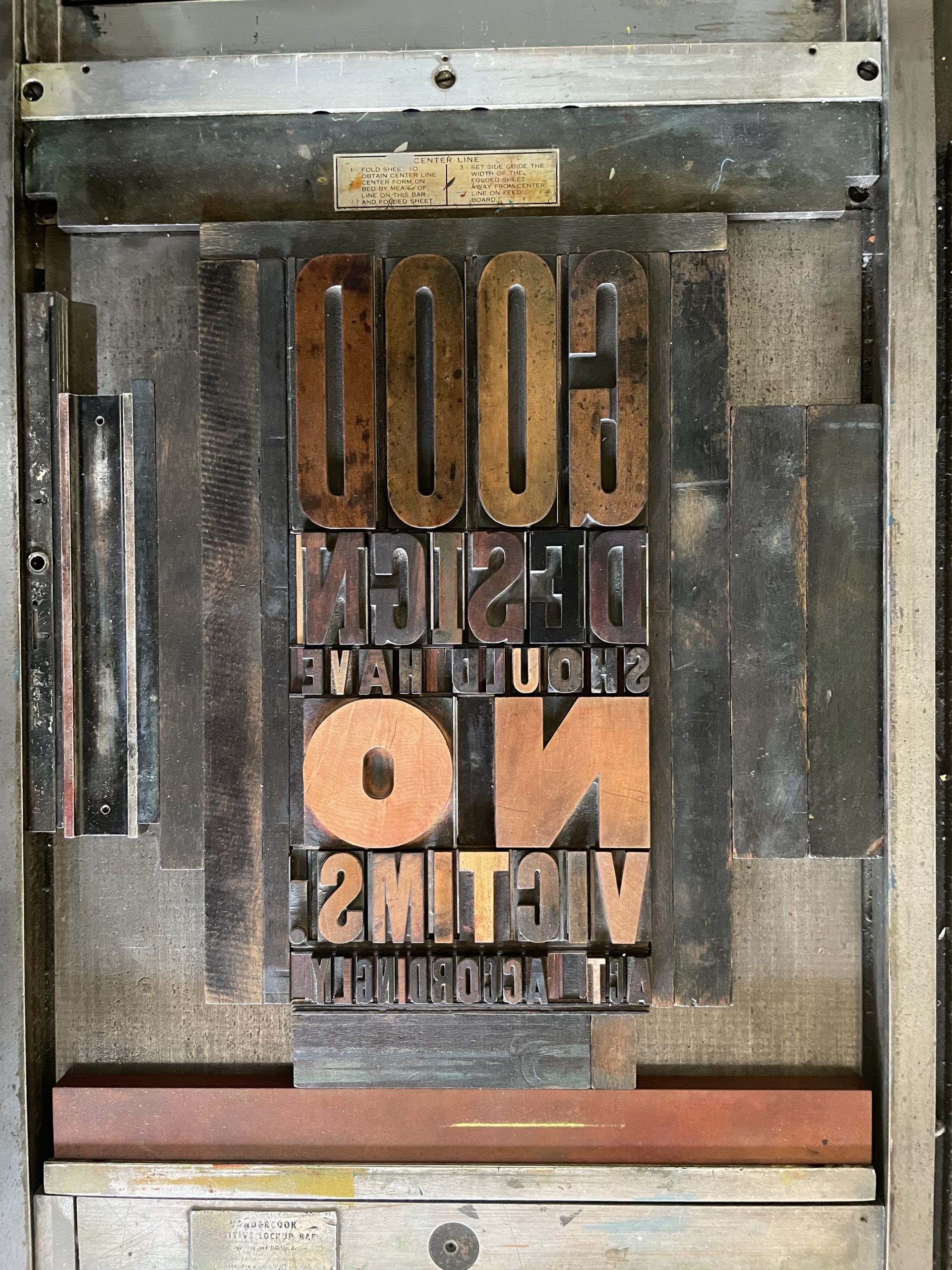
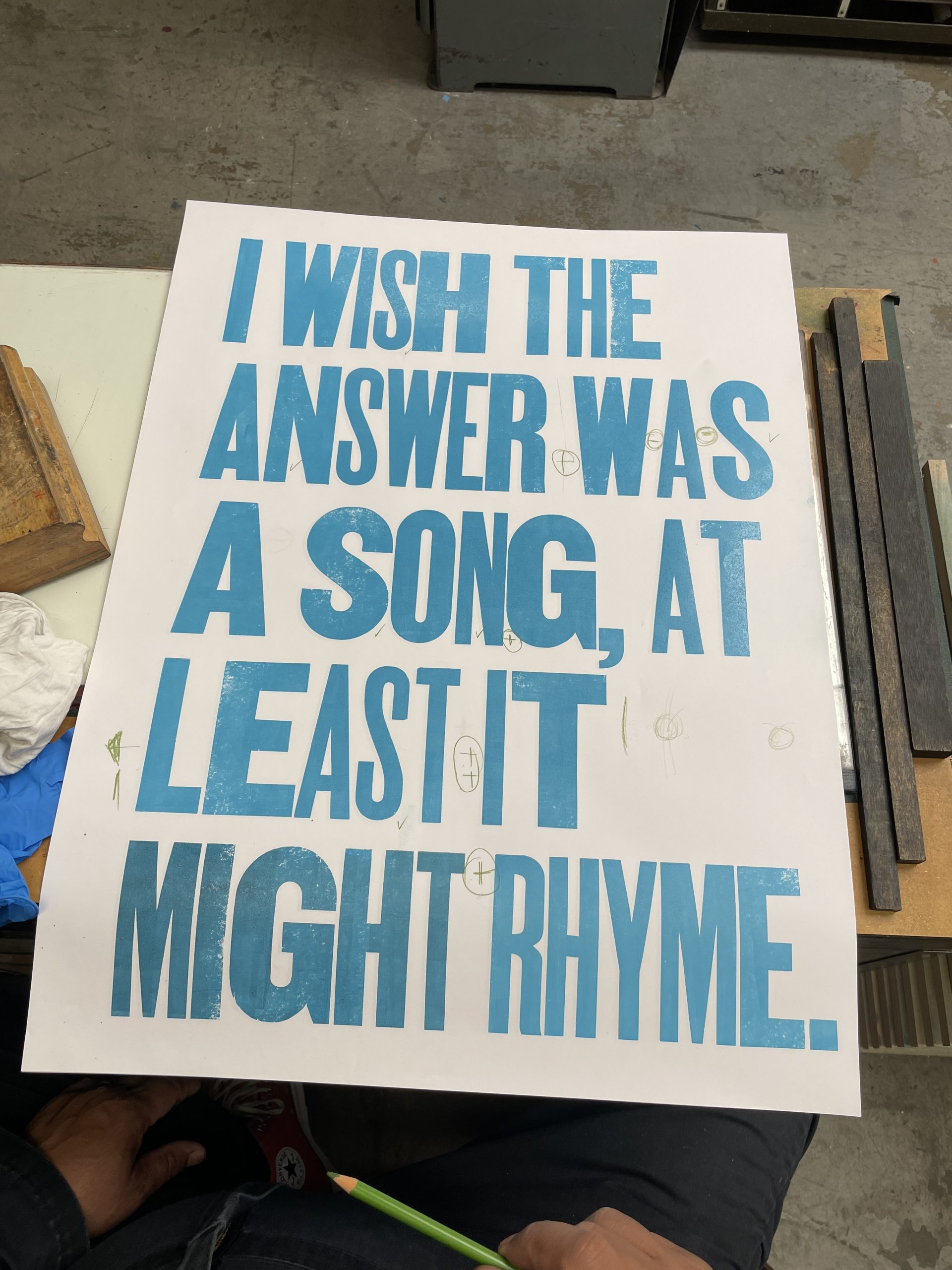
In addition to his more commercial clients, Rick is deeply dedicated to using printing as a means of community activism. His late mentor, Dr. Vincent Harding, worked directly with Dr. King in both Atlanta and Memphis, and that legacy remains a strong thread within Rick’s own work. In Denver, he cites Brian Allen and Tom Parson as compatriots in expanding the world of printing into the fabric of the city—and that commitment to acknowledging those who helped shape his practice along the way is a core tenant of who I came to believe Rick is as a designer.
In 2017, he and partner Debra Johnson added The Shop at MATTER—a bookshop focusing on queer, BIPOC, feminist, and revolutionary sundries that also acts as a gathering place for the community. The Shop became so popular that it expanded into a separate space a few doors down in January of the year. It’s one of those rare places where you actually see strangers start talking about things on the shelves, and engaging in those conversations for 20 minutes or more.
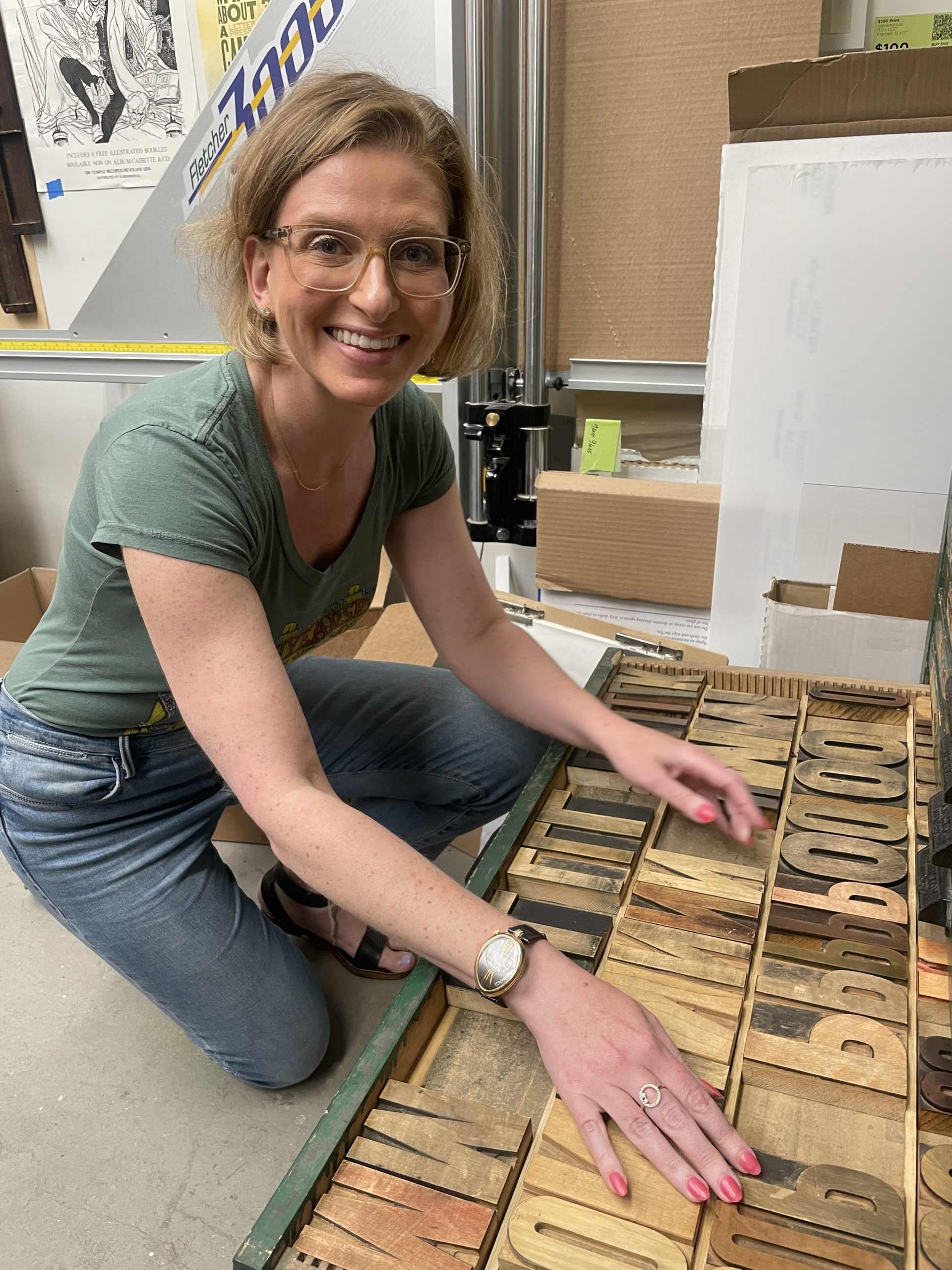
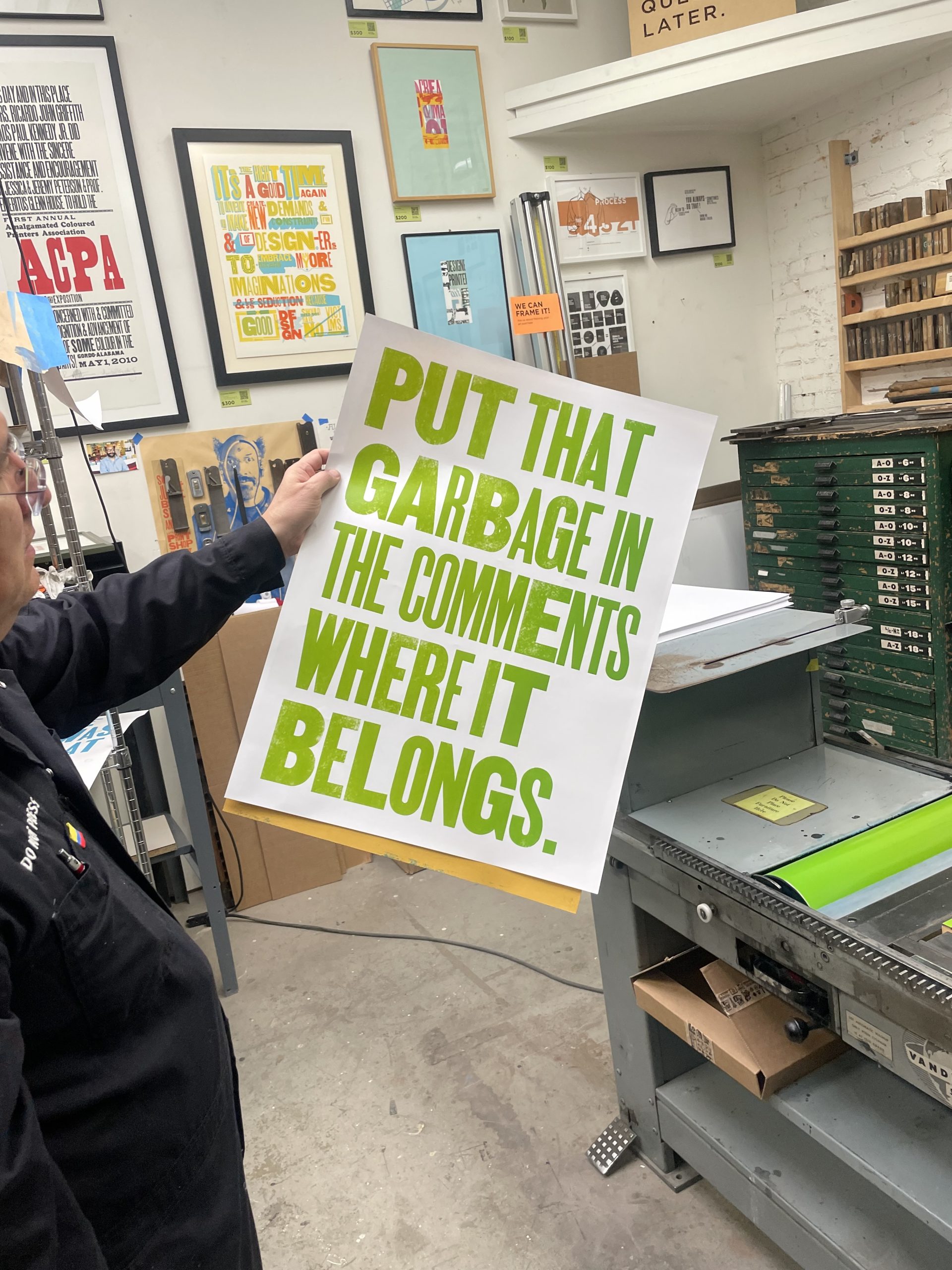
Later that week, I saw this dedication to true community play out in real time. A young man walked into the print shop seeking work or a diversion from the nearby shelter and Rick invited him to spend the day with us, share a meal, and hang out while we printed quotes to wallpaper the new bathrooms at MATTER. As the team pulled prints, he placed them on the drying rack, sharing stories as we mixed ink and talked about letter spacing. I’ve never witnessed a designer put their philosophy into action so directly and without any fanfare. It was humbling to experience such a simple act of general, basic kindness.
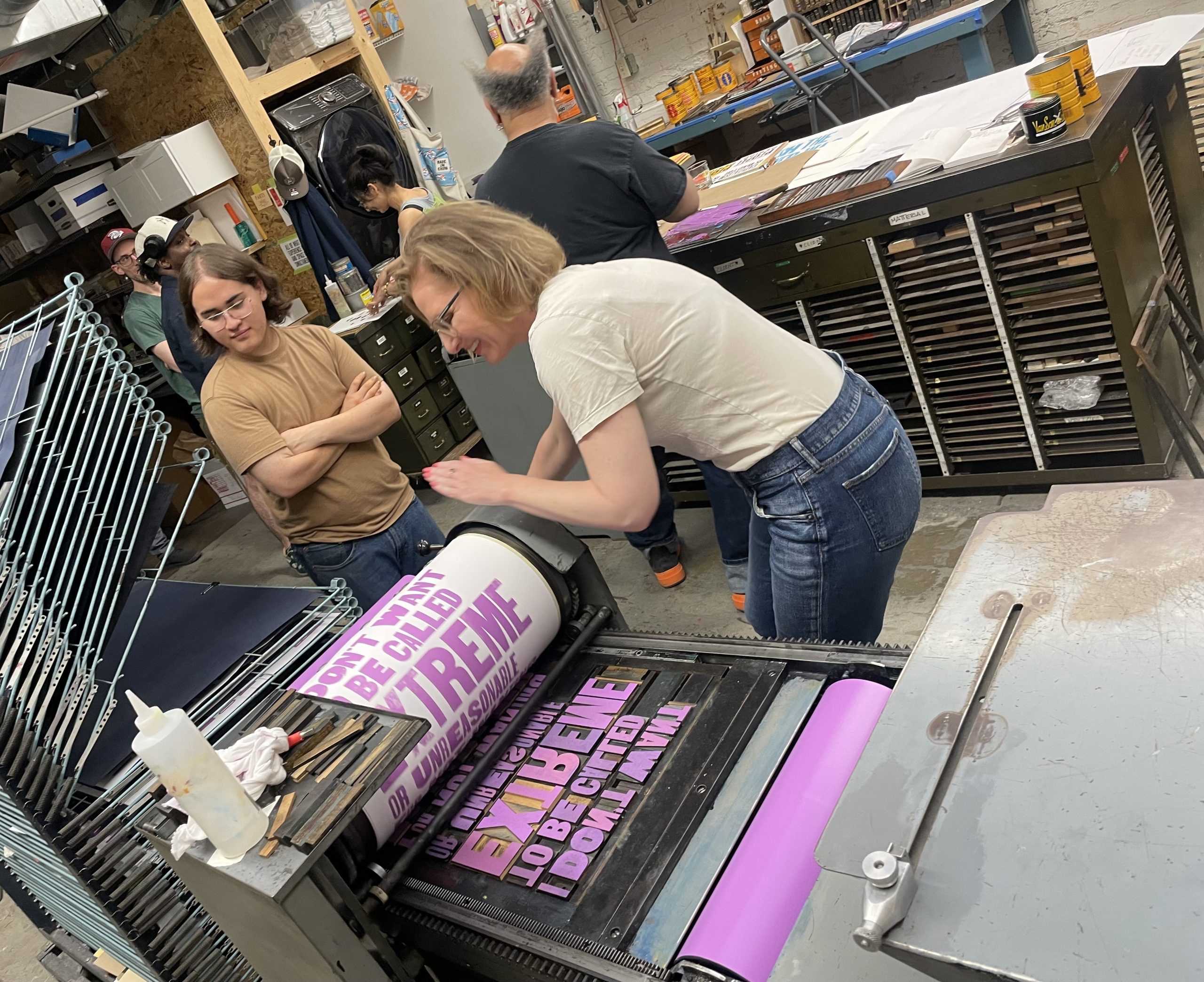
The next day, he hosted one of his weekly open print evenings where anyone can stop by, hang out, and pull a print. Two designers that had recently been to Poster House the last time AIGA was in town dropped by, as did a handful of seasoned local attendees. The ink was flowin’, as were the jokes, and soon we found ourselves ending the evening 10 people deep with a quick walk to the Thursday sacrament of street tacos a few blocks away, enjoying one of the best meals in Denver before it started raining.
Over the past few years, I’ve worked with a variety of letterpress printers, most of whom I’ve written about for Poster House. Some have taught me the highly technical rules of printing, the care one must take when creating a functional and beautiful design. Others have emphasized that once you know how something works, messing around and testing its limitations is the best way to know what can be done. With Rick, each time you approach a project, you are activating the healthy expression of a hypothesis—the worst that can happen is you learn something.
